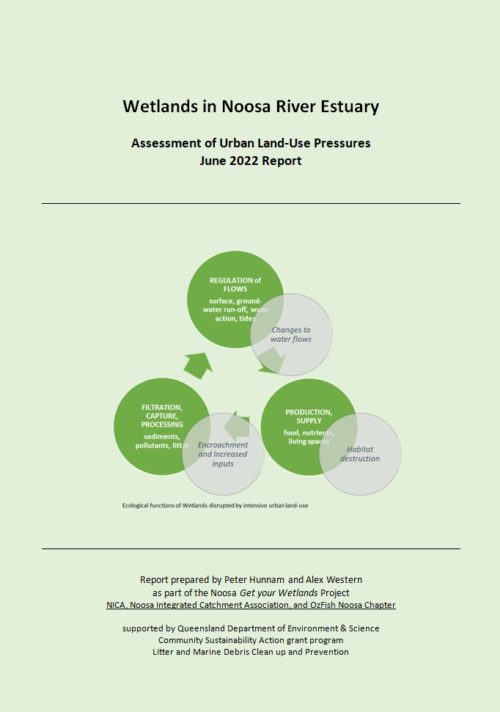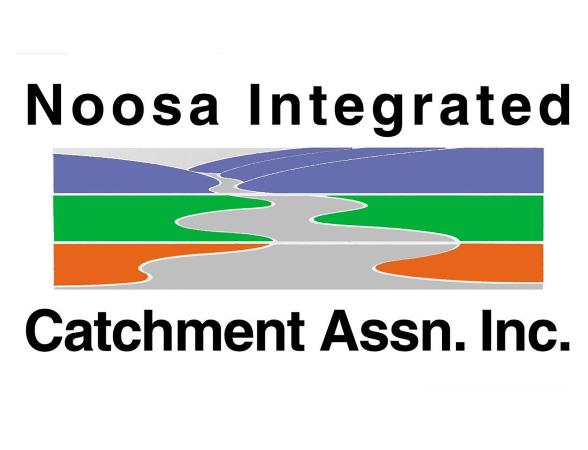Peter Hunnam and Alex Western have recently completed a desktop mapping survey of the lower Noosa River, using existing spatial data-sets to assess the distribution of foreshore and riparian wetland habitats across the estuary and its catchment, and to identify the main types and extent of pressures exerted by intensive urban development on the ecology of these habitats.
Here is a link to their June 2022 report; “Wetlands in Noosa River Estuary – Assessment of Urban Land-Use Pressures” on the NICA website.
Copies of the report can be obtained from Gill at NICA office ( admin@noosariver.com.au ) and enquiries about the assessment can be addressed by e-mail to peterhunnam@hotmail.com
The survey is the first part of the Get your Wetlands project, supported by a Community Sustainability Action grant to NICA and OzFish, from the Queensland Department of Environment & Science.
The idea behind Get your Wetlands is to support and extend conservation activities undertaken by local community volunteers, including river “Clean-Up” campaigns; riparian “Bushcare” work in Tewantin, Doonella, Weyba Creek and elsewhere in the estuary; and Riverwatch and Waterwatch programs organised by NICA with OzFish, NCBA and other partners including Noosa Council.

The findings from the 1st stage survey will be used to raise awareness in the community of the ecology of the lower Noosa River, and to promote and help develop collaborative efforts by all stakeholders to improve management of the ways in which the Noosa Estuary ‘precinct’ is used and developed, at the same time as strengthening ecological restoration and conservation.
The 2nd stage of the project over the next 12 months is to organise initial clean-up and restoration activities at some of the more degraded public foreshore wetland sites identified in the survey.
The aim is for NICA, OzFish and other groups to work in partnership with Noosa Council, to engage community volunteers plus contract labour to clean-up and initiate habitat restoration at a number of pilot “Living Foreshore” sites throughout the estuary.
Peter Hunnam


